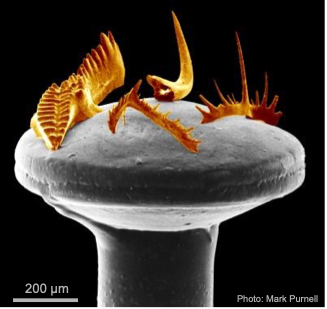RSES seminar this Thursday on zoom
The Conodont Geothermometer

Ian Williams
Research School of Earth Sciences
Australian National University
Sept 2 • 1 pm (AEST)
Seminar will be broadcasted on Zoomhttps://anu.zoom.us/my/rses.seminar.room?pwd=NGxUekIranBCQnhQcFdkVC9kSjloZz0
( ID 606 666 0101, password: jaeger)
Abstract
With the inevitability of continued and rapid global warming now beyond reasonable doubt, the question arises of its likely future impact on ecosystems, particularly marine ecosystems. The geological record contains abundant evidence of the appearance and disappearance of marine animals through time. It is highly likely that climate change has been one major factor, but demonstrating the fact is not straightforward. It has long been recognized that one of the most direct recorders of global temperature is the temperature of the oceans, and considerable effort has gone into attempts to measure changes in that temperature in the geological past. One method used very successfully is measuring the oxygen isotopic composition of carbonate marine fossils, exploiting the fact that the difference in oxygen composition between calcium carbonate and the water from which it was precipitated is temperature sensitive. The method works well for relatively young rocks, but becomes less reliable in older rocks because of the susceptibility of carbonate to chemical alteration. A more stable alternative is calcium phosphate (apatite), but phosphatic fossils are rare. The fossil of choice is conodonts. Conodonts are the carbonate fluorapatite mouthparts of extinct marine protochordates that are found mainly in marine limestones of Cambrian to late Triassic age, a period of nearly 350 Ma. Analysing the oxygen isotopes in conodonts by conventional gas source mass spectrometry is difficult—the chemical processing is complex and several milligrams of the rare, tiny fossils are required for a single analysis. Analysing conodonts by ion microprobe also has its challenges, but has great advantages—it requires no chemical preparation and very little sample, and is fast and relatively non-destructive. RSES has led the way in developing this technique, with some interesting results.